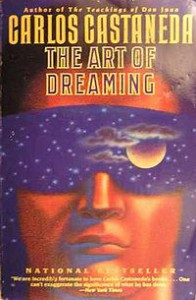Tuesday, February 22, 2011
Balance
KOYAANISQATSI
in turmoil. 3. life out of balance. 4. life disintegrating.
5. a state of life that calls for another way of living.
Tuesday, February 15, 2011
CBC Books - The Book Club - The great CBC romance novel challenge comes to an end
What a month it has been. We laughed and cried. We explored books covering sex, love and romance. We learned what it takes to write a romance novel. All month, Gia and Lachlan were never far from my thoughts. I found myself pondering what they were doing and how they were feeling. I became a romance writer.
Through my blood, sweat and tears, I learned some valuable lessons, for both writing and life.
I am not ending the month with a solid manuscript worthy of submission. In some people's eyes, this may mean I failed. But I learned what it takes to write a romance novel that can move beyond the realm of my imagination and into the hearts and minds of readers.
And it takes a lot.
1) You need to have passion
Without passion, you'll never be able to translate the fire inside you to the pages in hand. Romance novels work because the characters are filled with so much emotion that they can't help but fiercely fall in love, fight, break up and, ultimately, make up.
You also need to have passion for your characters and your story. If you don't care about your characters as much as you do your children, their story will become mangled, inconsistent and filled with about as much heat as a lukewarm bath.
2) You need to have a plan
Romance readers do have certain expectations: vibrant characters, compelling scenes and moments of crisis. But as the author, you're also the mapmaker and the guide. In order for your story to work, you can't just sit down and start typing. You need to think about whether what you want to do with your characters is not only realistic, but compelling enough to keep your readers engaged. (You could start typing if you want to. But every time I did, I typed myself into a corner and had to backtrack. I found this creatively frustrating and demoralizing. Having an outline helped me keep focus and avoided a lot of frustration.)
3) You need to have respect
Romance occasionally (and possibly unfairly) gets a bad rap. But those who like it, like it a lot. Those who like it are smart and savvy and they want stories that keep up with their intellect and carnal desires. If you don't respect the genre or the reader, your story won't be smart or original or worth their time. Know your audience, know your genre and know that you'll need to work harder than you ever imagined to be worthy of their attention.
4) You need to have humility
Putting my romance novel, A Chemical Reaction (yes, I chose a title!), out there for everyone to read was terrifying. What if people didn't like it? What if they actually read it? But by acknowledging it was a work in progress and accepting the criticism of others, I know the story and my writing became stronger. So thank you, everyone who took the time to submit a comment, send me an email or simply read what I wrote. I'm a better writer because of it.
5) You need to have creativity
With so many romance novels coming out every month, it's hard to stand out while still fitting in. If you're going for the Harlequin series-style romance, you need to give readers what they want, but still leave them wanting more. As a writer, you have a choice: make your story the best your chosen sub-genre has ever seen or reinvent the tried and true so your reader keeps turning the pages.
With that in mind, here are the final few chapters of my romance novel. Please offer your editorial suggestions in the comments below. I can't wait to see what you think! Harlequin, I may submit this manuscript after all. After I rewrite everything.
![]()
Associate producer Erin Balser is ready to give the NASCAR series at Harlequin a try now. Fast cars and fast women...what could be better?
Monday, February 14, 2011
Independent Artists - Viradical - Hologram: Holographic Buddha Network - R6XX : For Psychonauts and Curious Minds
This lenticular hologram was created for maximum visual effect by the masters of holography at Laser Guided Visions.
This hologram is 5'x7' and the patterns change just like the animated image when the hologram is moved from side to side.
Dreaming
Carlos Castenada‘s seminal work, “The Teachings of Don Juan: A Yaqui Way of Knowledge.” This wonderful book opened my mind to a new view of the universe.

Sunday, February 13, 2011
Tuesday, February 8, 2011
Monday, February 7, 2011
Quotes by C.G. Jung from the Collected Works
About Art……
“As this “inside” is invisible and cannot be imagined, even though it can affect consciousness in the most pronounced manner, I induce those of my patients who suffer mainly from the effects of this “inside” to set them down in pictorial form as best they can. The aim of this method of expression is to make the unconscious contents accessible and so bring them closer to the patient’s understanding. The therapeutic effect of this is to prevent a dangerous splitting-off of the unconscious processes from consciousness. In contrast to objective or “conscious” representations, all pictorial representations of processes and effects in the psychic background are symbolic. They point, in a rough and approximate way, to a meaning that for the time being is unknown. “ (CW15 § 207)







